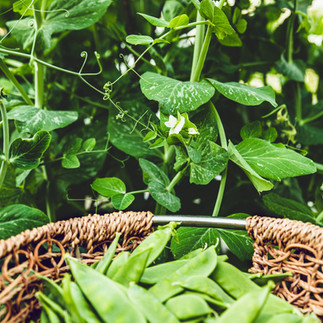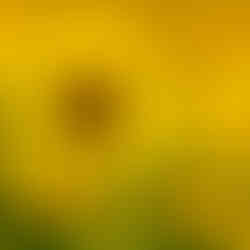What is Plant A Flower Day? (And 10 tips for gardening with your kids)
- Nerida K
- Mar 9, 2023
- 4 min read

March 12th is ‘Plant A Flower Day’. A day dedicated to planting flowers and celebrating the essential role they play in our ecosystem and lives.
Why are flowers important?
Flowers not only add colour, scents and biodiversity to gardens and the environment, they help plants to reproduce, reduce environmental pollution and they can feed insects, birds, animals and humans. Flowers form an integral part of many foods and teas we enjoy, and they hold cultural significance as religious and symbolic objects. Think of all the ceremonies, holidays, and memorable events where flowers are arranged and given.
There are lots of interesting things about flowers. Did you know flowers affect our mood? The presence of flowers can cause happy emotions and scientific research suggests they help reduce stress and anxiety. Did you know in the 1600s, tulips were so valuable they were worth more than gold? Or that orchids don’t need soil to grow? They can get all the nutrients they need from the air instead!
Tips for gardening with kids
With everything that’s so wonderful and interesting about flowers, what better way to celebrate the arrival of spring than by getting everyone out into the garden. Gardening is a great activity to do with your kids, with plenty of learning opportunities. Gardening can give lessons on food, nature, patience, and planning while sparking play, curiosity, and imagination. Plus, most children love gardening, even if it’s just the simple task of watering the plants!
Now we know not everyone has a green thumb and gardening can be intimidating, so we’ve compiled some tips, resources and funs ideas to get you exploring and planting together.
1. Plant easy and fast-growing flowers and vegetables
It’s always best to do a little research and plant according to your garden’s location and climate. What plants grow well in the area you live in? Will your garden (whether it’s a huge backyard or a couple of pot plants) have a lot of sun or shade?
However, there are some hardy and speedy growing flowers and veggies that are great for a lot of gardens. Pots of salad leaves, established strawberry pots, cherry tomatoes, baby carrots, snap peas, beans and herbs can be grown in the garden or in pots. And if you’re looking for flowers, daisies and sunflowers are favourites.
Plant and flower suggestions for a kids garden:
YardSmart plants that grow well in Calgary and are good for the environment:
2. Decorate the garden
There are many arts and crafts that can encourage kids to decorate a space in the garden. Stepping stones, painted rocks, personalized pots, bird feeders, decorative plant signs, and old toys are all great ideas.
5 easy garden crafts for kids:

3. Choose a garden theme
Choosing a theme is a good way to create interest in the garden. This list of 10 Big Benefits of Gardening with Kids also includes an interesting list of garden themes you can use to inspire planting and decorating. For example a fairy garden, a pizza garden or a wildflower garden:

4. Visit community gardens, children's farms, farmers markets and botanical gardens
This is a great way to get inspiration or have some gardening fun if your own backyard is small or non-existent. Head to a nearby public garden or take a road trip to a farm in a more rural area to start conversations about growing, food and nature.
5. Choose gardening activities that suit your child's age
For young ones the activity could be as simple as a patch of dirt to enjoy digging or the popular task of watering the garden with the watering can. Other garden activities include: planting bulbs, composting, weeding, picking ripe vegetables and fruits, picking flowers, raking leaves, counting butterflies and replanting and repotting.

6. Attract insects and birdlife to your garden
Choose flowers that will attract bees, hummingbirds or butterflies. The local plant nursery is a great place to explore with your little one and offers a wealth of information about what to grow and what plants will attract local fauna.

7. Study nature together
Enjoy learning about plants, gardening and the outdoors together. You could start with researching and planning a garden together or it could be as simple as going outside and noticing the shapes and colours of plants. Start a nature journal to keep notes of what you see, the birds you find or draw pictures of flowers. Explore books! There are many beautiful children’s books that will spark conversations about nature.
‘What’s Inside A Flower?’ by Rachel Ignotofsky is a nonfiction picture book about how flowers grows.
And here are some other books about changing seasons, honey bees and the environment:
8. Give your kid a personal garden space
Choose a place in the garden where your kid can decide what to plant, where to plant and how to decorate. Or a potted plant they can call their own and take care of.
9. Don't be afraid to make mistakes
There are good lessons to be learned from seedlings that fail to sprout or plants that needed more (or less) sun and water. Talk about what happened and try to figure out solutions and learn together. Take a trip to the plant nursery to ask questions, get some books from the library or search the internet for what you will try next.
10. Explore different types of gardens and growing
Here are some other fun garden ideas:
Kitchen Scrap Gardening
With a little effort and a pinch of creativity you can devise some very imaginative indoor gardens from your kitchen leftovers! Kitchen scrap gardening is when you grow plants from items you’d normally throw in your compost bucket.
DIY Terrariums For Kids
Kids can learn how to care for living plants by making their own terrariums, plus they can use their own toys and decorations to give each terrarium an extra special touch!

Create your own Fairy Garden
Repurposing an old clementine box and transforming it into a fairy garden.

Indoor seed cup garden
Many gardeners start seeds indoors during the last weeks of winter or early spring to get a head start on the growing season. When it’s too cold to plant anything outside, you can start seeds indoors and transplant them in the ground once the weather warms up.


















































Comments